Equipment builders and end-users alike can find a wide variety of technology choices to solve proximity sensing problems — from the very simple to the most complex. But, which one will work best for you?
Although inductive proximity sensors will most likely continue to be the first choice for detecting metallic targets at short ranges, many other types of targets and ranges require a different kind of sensor. To help you select the best match for your application, compare three of the most widely used types: capacitive, photoelectric, and ultrasonic sensors.
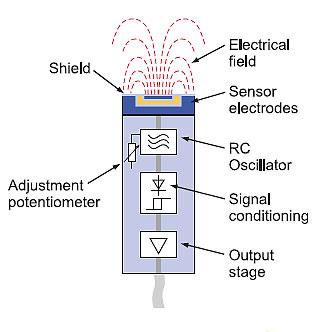
Typical capacitive sensor construction shows two plates: one connects to the oscillator (sensor electrodes), and the other is the object being sensed, which is detected within the electrical field.
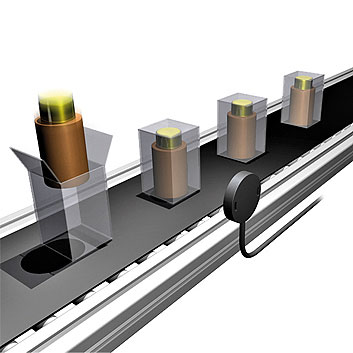
Capacitive proximity sensors can detect objects composed of a wide variety of materials. Here, a capacitive sensor detects the contents of a box.
Capacitive Sensors: changes in object conductivity
A capacitive sensor functions like a typical capacitor. The metal plate in the end of the sensor electrically connects to the oscillator, and the object to be sensed acts as the second plate. When this sensor receives power, the oscillator detects the external capacitance between the target and the internal sensor plate. This arrangement completes the circuit and provides the necessary feedback path for the output circuit to evaluate.
Capacitive sensors can detect many different kinds of objects. For example, solids, liquids, or granular targets are all detectable (including metals, water, wood, and plastic). Objects with a high density (metal) or a high dielectric constant (water) are the easiest for capacitive sensors to detect since they
provide the needed external feedback at a point farther away from the sensor face than other targets.
Capacitive sensors typically top out at a maximum sensing range of 25 mm (1 inch): object color or surface reflectivity have no measurable influence on this operating range.
The area that capacitive sensors truly excel in, however, is in their ability to detect “hidden” objects, or the contents of a box, bag, or bin. Capacitive sensors can tune out non-metallic container walls, so they can be set to detect different levels of solids or liquids. This capability is particularly useful in applications such as package inspection or liquid-level control where product quality control or process monitoring is not possible by any other means.
Photoelectric sensors see the light
Compared to capacitive sensors, photoelectric sensors operate on the principle of transmitting and receiving light. Three basic modes of operation for photoelectric sensors include diffuse, retro-reflective, and through-beam. All three offer reliable, long-range target detection.
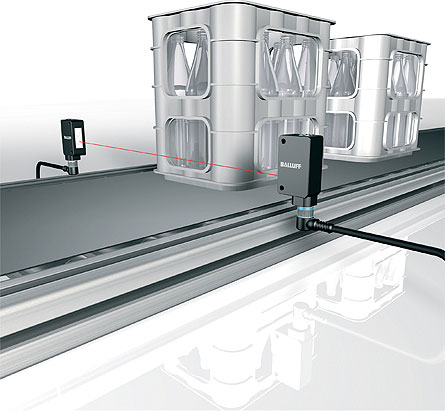
A through-beam photoelectric sensor pair is counting containers on a typical processing line.
Through-beam sensors consist of a separate emitter and receiver housing. Passing the target between them blocks light transmission to the receiver and changes the state of the sensors’ output. Retro-reflective sensors operate in a similar manner except both the emitter and receiver are in the same housing. The light is blocked between the sensor and a reflector, which has been mounted in space — typically to simplify wiring or to fit in a space where a second housing will not.
Diffuse sensing relies on the target to reflect light back to the sensor where the emitter and receiver are both located. By using different combinations of processing circuits, emitters, receivers, and lenses, specialty types of diffuse sensors are available including background suppression, full-color detection, color-mark inspection, luminescent-mark sensing, and distance measurement.
Photoelectric sensors are excellent for a number of measurement and detection applications, such as counting and orienting parts, detecting product defects, and verifying sizes at extremely long sensing ranges (70 m or 230 ft for a through-beam type). However, the primary drawbacks for photo eyes are target-surface reflectivity, target color, and target opacity. Take care to choose the best photoelectric sensor for these types of targets.
Ultrasonic Sensors provide sound solutions
Similar to photoelectric sensors, ultrasonic sensors rely on the transmission and reception of sound waves. Unlike their photoelectric counterparts, however, ultrasonic sensors have only two operating modes: reflection and through-beam. Because they operate at frequencies above 80 kHz, industrial ultrasonic sensors can offer robust performance for numerous short and long-range applications.
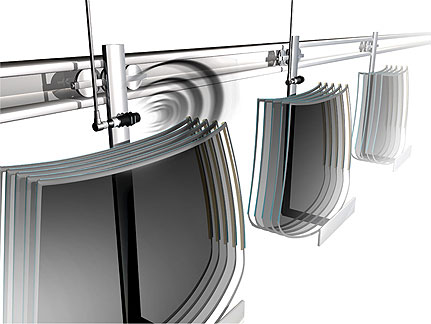
Ultrasonic sensors can detect, monitor, and process wider spacing between objects more easily than other types of proximity sensors.
Almost all materials reflect sound waves, so ultrasonic sensors are a fine choice for many tasks. Excellence in the detection and measurement of films, transparent objects, and liquids separate these sensors from their photoelectric counterparts. Target color or frequent color changes also have no effect on ultrasonic sensors.
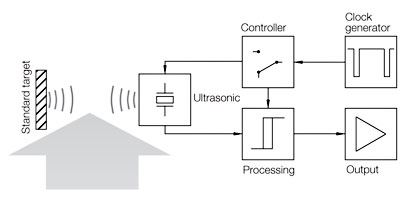
A typical ultrasonic sensor comprises a clock (signal) generator and a controller to excite the transducer, then a processor and output amplifier to handle the return signal.
Due to their use of sound waves, ultrasonic sensors also perform well in dusty, dirty environments. However, they do not operate well with small targets against large backgrounds or targets such as foam batting that are excellent for absorbing sound waves.
Which one should you use? Although it is not always clear which sensing technology is best for any given application, the chart below is an excellent guide. It lists various typical applications, which best fit the sensing technologies discussed above.
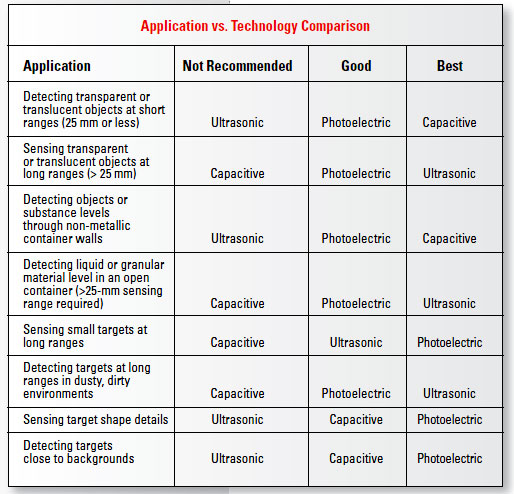
In general, capacitive sensor technology is extremely effective with many targets, but is hampered by a relatively short sensing range. Photoelectric sensors are superior for many precision tasks where their unique operating modes give them a clear advantage, but they also suffer from being the most susceptible to changes in material color, opacity, or surface texture. Finally, ultrasonic sensors are excellent for sensing a number of targets that photo eyes have difficulty with, but their dead-zone problems and sound-reflection qualities of the target need to be seriously considered in your design.
Balluff
www.balluff.com
::Design World::
Filed Under: Sensors (proximity), SENSORS, TEST & MEASUREMENT

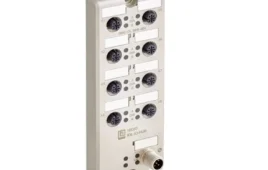
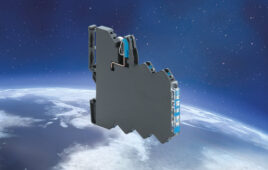
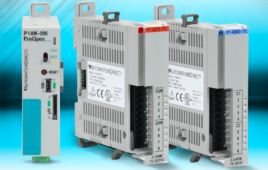
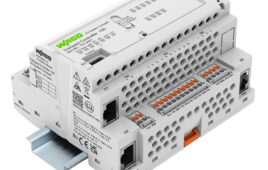
Tell Us What You Think!